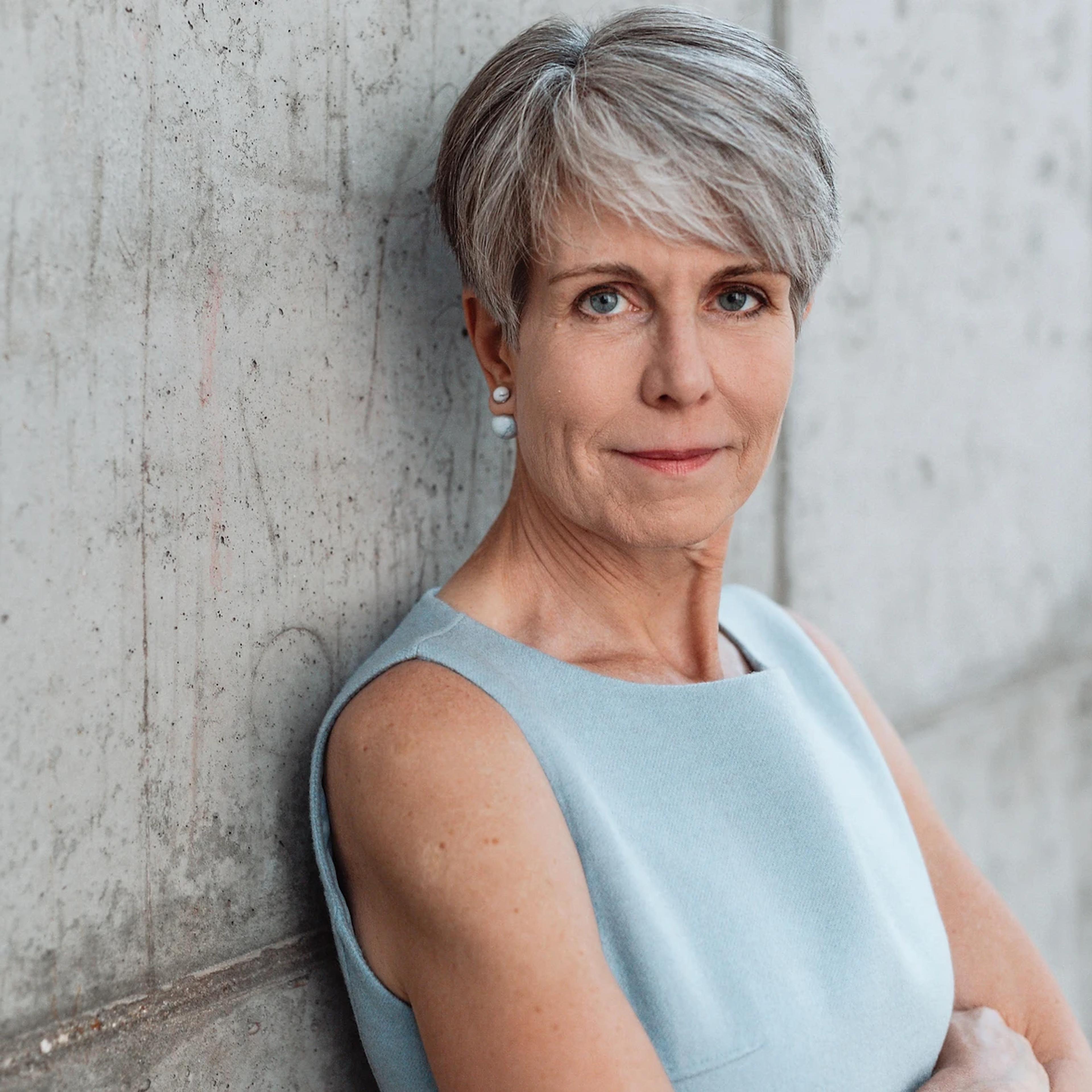Conversation
Berit Sandberg
"Playfulness is key. We need art-based playgrounds for adults."

Prof. Dr. Berit Sandberg is a professor of business administration (HTW Berlin, University of Applied Sciences), specialized in Public und Nonprofit-Management.
She has been researching the interface of arts and business for more ten years, developing concepts for arts-based learning. In 2019, she founded the label Art Hacking® for an arts-based innovation method, applying phases and tactics of artistic work to management tasks: from thought blocking to change of perspectives.
She is the author of an extensive number of publications, including 'The artist's glasses - What and how managers can learn from artists', Wiesbaden 2018 (with Dagmar Frick-Islitzer), 'Art Hacking for Business Innovation - An Exploratory Case Study on Applied Artistic Strategies' in: Journal of Open Innovation: Technology, Market and Complexity., S. 1-22, 2019.
MADELEINE SCHWINGE: Can art foster social change, and what role can artists and their work play in this? More in depth, can they take a leading role?
Prof. Dr. Berit Sandberg: Lately, the arts seem to offer a promise of salvation from the misery in the world. I am wondering if many artists identify themselves with that attribution. Certainly, there are artists who have become social entrepreneurs. Others get involved in citizen art and put themselves at the service of so-called new principals. However, these successful initiatives do not form a mass movement. Quite the same goes for a presumed added value of arts in business.
Bruce Nauman once put this skepticism more aptly than I ever could: “Art doesn't free us from anything. ... At best, it gives us a kind of energy. But it doesn't change people. They go back to their world, to their lives, and do what they do. Only very rarely can art shift anything.”
Art may be better at elucidating important questions rather than providing answers or acting at the forefront of social change. In this sense, artists can teach us how to make sense of the world in a different way. They can inspire us to find unconventional and groundbreaking solutions, but only if we let them. It’s not a no-brainer.
MS: In a time of radical upheaval and crisis, can we still hope for a better future? What impact can narrative have on the process of building such a future?
BS: As long as there is science fiction and audiences strongly resonate to superhero movies from the Marvel and DC universe, not all is lost. Questioning stereotypes, reframing stories, and sacrificing the laws of physicality for abundant imagination and rich storytelling are part of the game.
Just think of the cultural footprint Marvel’s blockbuster “Black Panther” left on Black America and Africa. It changed the representation of ethnic minorities, promoted strong female characters, turned a young black woman into a fresh role model for science and technology, and brought Afro-futurism into the spotlight.
Even on a smaller scale, artists can be advocates of social change by giving voice to people who exist beyond public awareness and staging everyday superheroes. Moreover, the arts remind us that narratives may emerge and progress beyond verbal expression. They help us become more aware of images, objects, music and human bodies that are telling wordless but much more powerful emotional, transformative stories.
MS: What could be the premises of a transdisciplinary dialogue (between art, culture and other disciplines) capable of triggering a social transformation? In your own work, what expertise or practices could go in the direction of such transdisciplinarity?
BS: Important prerequisites are curiosity and openness to other professional cultures and points of view. Sounds trivial, but it isn’t. Of all things, the discourse about the potential benefits of art in non-art environments emphasizes the different. There is a common notion of different worlds whose inhabitants do not speak the same language and therefore do not understand each other. However, emphasizing differences and cultivating (unconscious) prejudices does not help in transdisciplinary collaboration. Any dialogue must be wisely curated and incorporate the different qualities of the actors.
With Art Hacking®, we establish temporary mini think tanks in which businesspeople collaborate with artists on a problem. In doing so, we transfer the artistic process to a non-artistic issue. Ultimately, these mini think tanks are safe spaces for experimentation that thrive on intense dialogue and breaking thought patterns. During the process, the artists involved subtly take a leading role as creative catalysts, although they usually lack expertise on the question at hand. We rely less on reason and language than on intuition, while consciously bringing all senses into play. Playfulness is key. We need art-based playgrounds for adults!
MS: Assuming it is possible to build a better world on the ruins of the old one, what might it look like? What would you hope for in a better world?
BS: When artists start a new work, they try to get rid of preconceptions, well-known solutions and sometimes even their own tastes. In this respect, building a utopia from scratch might be an alluring mind game. What if an artist collective would recreate the world strictly according to ethical and aesthetic standards? Where would we end up with a radical openness to processes and a result that is typical of daring artistic approaches?
I do imagine a world that is less ruled by rationality, intellect, selfishness and greed.
MS: It is often said that artists (and creative people at large) have a unique ability to constantly search for the new, starting from scratch again and again, relentlessly. What strategies or rituals do you use when you start a new project?
BS: Usually, I sneak up on a task. If I have a certain question to answer I never do so right away, putting myself in a receiving mode instead. Notes with free-floating ideas will intertwine with results from specific research. I have learned not to cling to the first appealing idea. Kill your darlings!
Front Photo. © Berit Sandberg
Quote. Bruce Nauman im Interview: "Die Kunst erlöst uns von gar nichts" | ZEIT ONLINE